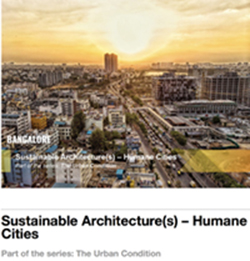Jul
2020
Jan
2021
Mar
2021
Jul
2021
What are the capabilities and capacities for delivering retrofit at scale? This special issue explores the accelerated delivery of domestic energy retrofitting at different scales – national, municipal, neighbourhood and individual sites. It will interrogate governance, economic/business, organisational, social and technical aspects and their interactions: existing planning capabilities; available building stock data and what more is needed; rural and urban retrofit strategies; the roles, capabilities and capacities of existing and new actors/enterprises in delivering retrofit (e.g. local authorities, urban planners, construction professionals, contractors and subcontractors); how can renovation elements be produced in an industrialised way to increase capacity and reduce costs; the economic, social, political, legislative, regulatory aspects of delivery models; what owners or inhabitants require; forms of user engagement; what future proofing is appropriate; what requirements and guarantees will ensure performance in use. There will be insights across different scales and geographical contexts as well as top-down vs bottom-up models. Distinctions & complementarities will be drawn for policies and delivery strategies for different scales, stakeholders, inhabitants and disciplines. Papers in this special issue will address key questions and offer solutions in these areas: Translating national and city level goals into clear targets for retrofit of the domestic building stock;
The governance and regulation of retrofit: enabling legislation, changes to existing legislation/regulation, enforcement, incentives, aspects of ownership and tenure; Planning and coordination perspectives: what new roles for planners, building control and assessment professions in identifying and cataloguing stock, facilitating and monitoring progress? Policy analysis of municipal actions/programmes on building retrofits and their intended outcomes; Top-down vs bottom-up approaches; incentives for participating in mass retrofit programmes; The inclusion of embodied energy/carbon in the total calculation; Training, skills and certification of schemes for construction professionals and individual projects; What capabilities and capacities do firms (SMEs and micro-enterprises) require to undertakeretrofit?; Supply chains for retrofit: coordination and management of domestic retrofit at scale; Logistics and construction management: the potential for reducing unit cost of retrofit and increasing quality; The business case (e.g. financial model) for retrofit and new business models for both private and public sectors; Contractual: performance-related outcomes, consumer protection, service-related pricing, performance guarantees; Mass vs individual retrofit for housing: technologies for retrofit at scale (e.g. Energiesprong, off-site, incremental, etc); Public engagement persuasion: allocation of responsibility; appropriate forms of engagement and empowerment; provision of reliable, independent information for tenants and homeowners; Energy behaviours: how retrofit affects demand; load shifting; new definitions of thermal adequacy, space shrinkage; Coordinating demand reduction with changing energy supply: reducing peak demand, increasing flexibility, and ‘fair usage’; The development of appropriate standards and retrofit processes for the particular contexts of developing countries.
Retrofitting at scale | Accelerating capabilities for domestic building stocks
What are the capabilities and capacities for delivering retrofit at scale? This special issue explores the accelerated delivery of domestic energy retrofitting at different scales – national, municipal, neighbourhood and individual sites. It will interrogate governance, economic/business, organisational, social and technical aspects and their interactions: existing planning capabilities; available building stock data and what more is needed; rural and urban retrofit strategies; the roles, capabilities and capacities of existing and new actors/enterprises in delivering retrofit (e.g. local authorities, urban planners, construction professionals, contractors and subcontractors); how can renovation elements be produced in an industrialised way to increase capacity and reduce costs; the economic, social, political, legislative, regulatory aspects of delivery models; what owners or inhabitants require; forms of user engagement; what future proofing is appropriate; what requirements and guarantees will ensure performance in use. There will be insights across different scales and geographical contexts as well as top-down vs bottom-up models. Distinctions & complementarities will be drawn for policies and delivery strategies for different scales, stakeholders, inhabitants and disciplines. Papers in this special issue will address key questions and offer solutions in these areas: Translating national and city level goals into clear targets for retrofit of the domestic building stock;
The governance and regulation of retrofit: enabling legislation, changes to existing legislation/regulation, enforcement, incentives, aspects of ownership and tenure; Planning and coordination perspectives: what new roles for planners, building control and assessment professions in identifying and cataloguing stock, facilitating and monitoring progress? Policy analysis of municipal actions/programmes on building retrofits and their intended outcomes; Top-down vs bottom-up approaches; incentives for participating in mass retrofit programmes; The inclusion of embodied energy/carbon in the total calculation; Training, skills and certification of schemes for construction professionals and individual projects; What capabilities and capacities do firms (SMEs and micro-enterprises) require to undertakeretrofit?; Supply chains for retrofit: coordination and management of domestic retrofit at scale; Logistics and construction management: the potential for reducing unit cost of retrofit and increasing quality; The business case (e.g. financial model) for retrofit and new business models for both private and public sectors; Contractual: performance-related outcomes, consumer protection, service-related pricing, performance guarantees; Mass vs individual retrofit for housing: technologies for retrofit at scale (e.g. Energiesprong, off-site, incremental, etc); Public engagement persuasion: allocation of responsibility; appropriate forms of engagement and empowerment; provision of reliable, independent information for tenants and homeowners; Energy behaviours: how retrofit affects demand; load shifting; new definitions of thermal adequacy, space shrinkage; Coordinating demand reduction with changing energy supply: reducing peak demand, increasing flexibility, and ‘fair usage’; The development of appropriate standards and retrofit processes for the particular contexts of developing countries.
Google Scholar, EBSCO Knowledge Base, Chronos, OCLC, J-Gate, CNKI, DOAJ, CrossRef, SHERPA RoMEO, JISC KB+, Ex Libris.
There is no fee of any kind charged for publishing.
Guest Editors
Faye Wade (U of Edinburgh)
Henk Visscher (TU Delft)









